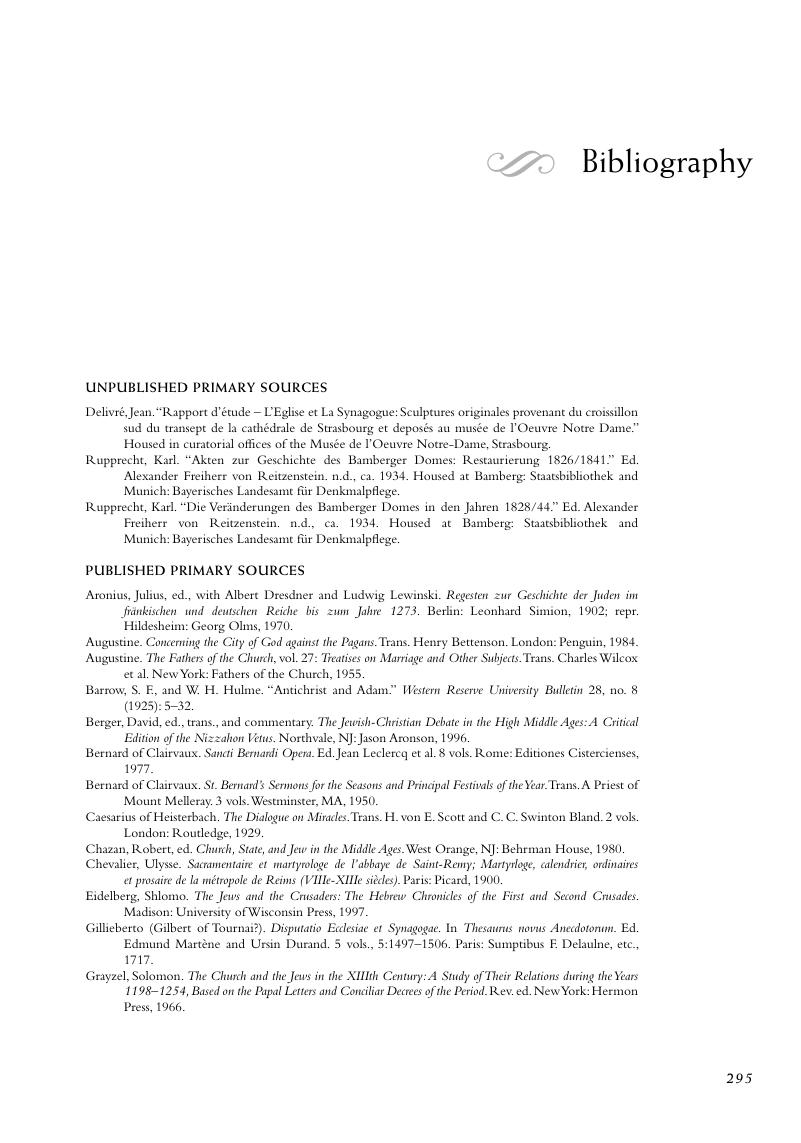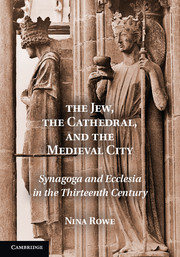Book contents
Bibliography
Published online by Cambridge University Press: 05 January 2012
Summary

- Type
- Chapter
- Information
- The Jew, the Cathedral and the Medieval CitySynagoga and Ecclesia in the Thirteenth Century, pp. 295 - 320Publisher: Cambridge University PressPrint publication year: 2011



